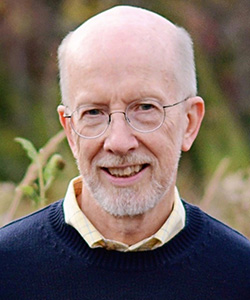
Most people now come to meditation and retreat practice through some exposure to mindfulness. But it seems that the word mindfulness means different things in different settings. So, what is this thing called mindfulness?
The Satipaṭṭhāna-sutta, the Discourse on the Four Establishments of Mindfulness, also known as the Four Foundations of Mindfulness, is one of the most important teachings in all of the Early Buddhist discourses. There’s a section of the discourse that is sometimes called the “definition”. It offers us a concise guide to the practice of mindfulness.
This is an adaptation of the definition:
“One abides contemplating the [establishments of mindfulness:] body, [ feelings, mind-states, and certain categories of phenomena,] diligent, clearly knowing, and mindful, free from desires and discontent with regard to the world.”[1]
This tells us the qualities that have to be present for us to relate to an experience with satipaṭṭhāna, or mindfulness in a broader sense of that word.
Satipaṭṭhāna is about meeting a moment of experience in a certain way. One aspect of that is captured in the Pāḷi word sati which is usually translated as “mindful.” Because the root of the word sati relates to memory, there’s often the understanding that sati refers to remembering, such as remembering to be with the object of meditation again and again. But the more key meaning of sati as it relates to meditation practice is a willingness to be present with what one is experiencing right now, and right now, and right now.
So mindfulness involves qualities of being with and being open to, or being receptive towards, whatever is the predominant experience right now. Maybe it’s the experience at the tip of the nose as one breathes in. Maybe it is an experience of hardness where one’s foot rests on the floor. Or it might be a pleasant feeling or a burst of thought.
Another aspect of how we meet experience in practice is captured in the phrase “free of desire and discontent in regard to the world.” It’s a simple willingness to not wish or try to make what is encountered different from what it is.
Combining sati with this, we have: being present without wishing that what we’re experiencing is other than what it is. This is one of the challenges of being mindful — and, what makes it special.
These two ways of relating to experience create the conditions for the third quality we’re to bring to our experience: sampajāna or clearly knowing, clear comprehension or being fully aware. When we’re fully present for something, which means not grasping after it or resisting it, only then can we clearly know and experience what that experience is.
It takes energy to bring these qualities to each moment of experience. Sometimes it needs to be ardent energy, so there’s a bit of passion about engaging in the practice, about meeting this current experience. But often it simply needs to be diligent energy. There just needs to be a commitment to meet what is occurring in our experience.
When we’re bringing all of these qualities together to meet each moment of experience we’re engaged in the practice of satipaṭṭhāna or mindful-ness.
For many people, especially in the first years of their practice, meditation mostly focuses on mindfulness of breathing, and maybe also mindfulness of other bodily sensations. (One may also cultivate the wholesome mind-state of mettā — goodwill or loving-kindness— but strictly speaking this isn’t a satipaṭṭhāna or mindfulness practice.) It usually takes a while to get a sense of what it means to bring mindfulness to an experience, to get a sense of how the experience of mindfulness is different from the way we usually relate to things.
But if we really want to be at ease with our lives as we move through the hectic events that fill our days, then we have to develop skill in being mindful with everything. The remaining practices in the Satipaṭṭhāna-sutta, when worked with diligently, will provide us with the skills that allow us to more or less automatically relate to our experiences throughout our busy day with mindfulness without having to consciously, intentionally do so.
So wherever you are in your practice, I hope you will explore how you can bring mindfulness to each moment of your life. This is the way towards peace, presence, and joy.[2]
[1]. Adapted from Bhikkhu Anālayo, Perspectives on Satipaṭṭhāna, Cambridge, UK: Windhorse Publications, 2013, p. 254.
[2]. A prior version of this was offered at Show Me Dharma, Columbia, MO on 02-05-2019.
Philip Jones has practiced meditation since 1987 and has been teaching Insight Meditation since 1996.